








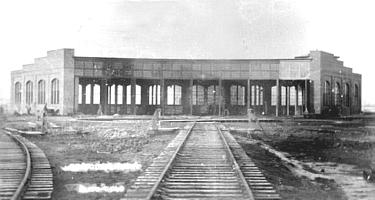
The roundhouse was built to service the early engines on the Kansas-Pacific Railroad and was one of several serving the Hugo Division Point for the Kansas-Pacific. It was a major part of this division point from 1909 through the early 1950's, serving both the Kansas-Pacific Railroad and the Union Pacific Railroad. The roundhouse served the growing passenger and commerce transportation across the plains and was a major source of employment for the town of Hugo.
Hugo roundhouse in 1920 with all the bay doors open.
The Hugo Union Pacific Railroad roundhouse is both architecturally and historically significant. Architecturally, it's an exceptional and rare surviving example of roundhouse design and construction and it has not had any of the original eight stalls removed. Further, the building possesses a high degree of architectural integrity due to its limited amount of disfiguring alteration, presenting an appearance today that is not too different from its appearance historically. The roundhouse is historically significant due to its association with the Union Pacific Railroad on the original Kansas-Pacific line in eastern Colorado and the importance of the Union Pacific Railroad in Colorado history is well documented.

1870-Kansas Pacific Railroad track completed to Denver. Hugo designated division point, with a five-stall roundhouse constructed at the southeast end of town. Hugo was the terminal point for all engineers and freight crews. A hotel and eating house were built to serve the rail business and the town was sustained mainly by the trade of railroad employees.
1882-The Union Pacific built large pens and shearing sheds at Hugo. These were used for many years shearing thousands of sheep with all the wool shipped by rail.
1886-The use of the Hugo rail yards as a cattle market by the big stockmen peaked in this year. Up to 45,000 head were driven here for shipment.
Late 1888-1889-Hugo residents heard rumors that the division point would be removed.
April 1889-Lincoln County was created by the Colorado General Assembly with Hugo becoming the county seat.
February 13, 1890-Union Pacific moved the division point from Hugo to Cheyenne Wells. Crews moved their homes and families to the new terminus. Hugo merchants believed the railroad had dealt the town a death blow. The fate of the first roundhouse building is unknown.
May 1890-The U. S. Land Office was established at Hugo. Under the Homestead Act, homesteaders could claim 160 acres of land if they could "prove up" on the property over an eight-year period (later reduced to five years).
1890-1907-Hugo subsisted on trade from small stockmen, wool growers, farmers and the county business.
December 1906- J. A. Northrop shipped a carload of wheat to Colorado Springs, the first carload of grain ever shipped from Hugo.
March 1907-Because a new law increased the amount of land that could be homesteaded to 320 acres, settlers began moving to Lincoln County in great numbers. The Hugo U. S. Land Office had 643 land entries this month, the record for any land office in the United States.
1907-New federal law prohibited railroads from working trainmen for shifts of more than 16 hours each. Union Pacific responded by modifying its two divisions between Denver and Ellis, Kansas into three, with the division point to be removed from Cheyenne Wells and two new division points to be created at Hugo and at Sharon Springs, Kansas.
September 1907-The Union Pacific projects moving the division point back to Hugo early in 1908. The first carload of material for a new roundhouse, to be constructed at the west edge of town, arrived.
October 1907-Grading and site preparation began.
A bunkhouse and a mess house, each 24'x50' in size, were built. The railroad announced employment of 100 laborers and a proposed expenditure of $100,000 for the new facility, which would include an eight-stall engine house (roundhouse), coaling station, 65,000-gallon water tank, a $17,000 water treatment plant, boiler house, machine shop, a track scale, an 80-foot steam turntable, master mechanic's office, three car repairers' buildings and an ice house, plus five miles of side track.
October 1907-An attempt by a western miner and banker to corner the copper market resulted in several banks and Wall Street brokerage houses going bankrupt. Depositors demanded their money from New York banks. The nation's most severe financial crisis up to that time, the Panic of 1907 had subsided by mid-November, leaving a nationwide recession in its wake.
November 1907-Due to the panic, work was suspended on the roundhouse project, which was 10 percent completed. Building materials continued to arrive, however, including the new steel turntable, designed large enough to handle Pullman coaches.
July 1908-Work resumed on construction of the roundhouse and terminals.

August 1908-Bricklayers began construction of the roundhouse, and a 25-30 member track-laying crew began building sidings at Hugo.
September 1908-A steel crew arrived to begin construction of the new railroad water tank.
October 1908-Excavators for the coal chutes encountered ground water at the roundhouse site.
November 1908-The new U. P. ice house looked like a grain elevator and was the tallest building in Hugo. The turntable was put in place.
December 1908-Workmen laid the block floor in the roundhouse.
January 28, 1909-U. P. engines #1833 and #1836 pulled into the roundhouse, the first of four to be based there.

February 1, 1909-The division point was formally relocated to Hugo, and the roundhouse commenced operations with a crew of 15. The first change of engines took place at 3:55 p.m.
March 2, 1909-Hugo residents hosted a large banquet in the Lincoln County District Court room at the Courthouse in honor of Union Pacific officials and railroad employees upon the opening of the roundhouse. Two hundred persons attended the feast, which lasted from 10 p.m. until 1:30 a.m., and the dance which went on until dawn. John P. Dickinson, receiver of public monies at the U. S. Land Office in Hugo, was one of the main speakers, giving the history of the railroad in Lincoln County. A souvenir of the banquet was the printed menu, which featured a photograph of the new roundhouse and the first two engines to occupy the new building.
April 20, 1909-The citizens of Hugo voted to incorporate the town, by a vote of 70 to 9.
Hugo Union Pacific yards in 1916
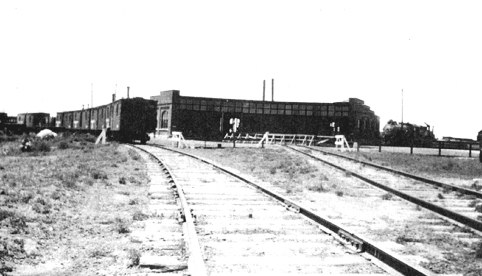
Hugo Roundhouse in 1920

Roundhouse operations provided employment for up to 200 persons at any given time, until the mid-1930's. According to Mary Northrop, when her family (the Wheelers) arrived in Hugo in February 1916, housing was scarce due to the roundhouse being "at its best" and employing many men. But, after nearly 40 years of operation, the roundhouse was closed and the turntable was removed c. 1947. The turntable was sent to Sharon Springs, another division point, and was subsequently scrapped.
Engine #2874 was stationed in Hugo Jan. 31st 1949.
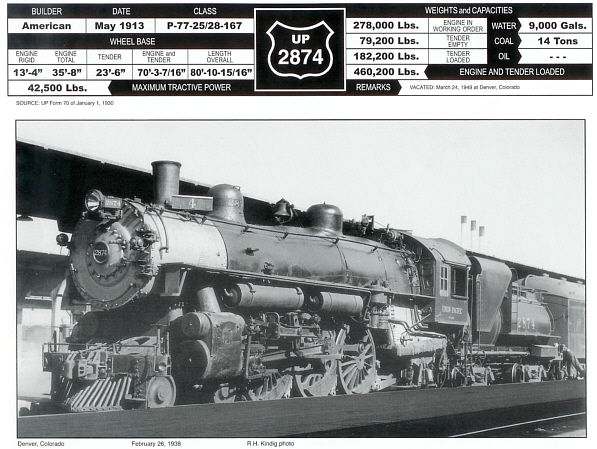
1951-The Union Pacific sold the roundhouse building to L. E. Dole and Clifford Palmer, who opened a hardware store there. The railroad retained ownership of the land under the roundhouse. The roundhouse building was used by the Prairie Hardware and Implement dealer until the 1970's.

1963-Lafe Dole became the sole owner of the Prairie Hardware and Implement business.
1970-Clifford Palmer purchased the roundhouse building at a tax sale.
1974-Lafe Dole regained possession of the building, then sold it to Merlyn Stum, who used the building for storage.
December 1, 1994-A State Historical Fund grant application was submitted by Robert D. Holland, seeking $5,000 to complete an architectural evaluation of the building and to apply for historic site designation. The grant was to be matched with $1,000 in other funds. Ultimately, Mr. Holland hoped to develop the roundhouse into a museum, art gallery and visitor center.
August 22, 1995-Robert D. Holland prepared an application to the Colorado Historical Society seeking addition of the roundhouse to the State Register of Historic Properties.
October 10, 1995-Parkhurst Heavener, Inc. and Baldry Associates, Architects & Planners, submitted the preliminary investigative report for the roundhouse.
April 17, 1996-Robert Parkhurst, Consulting Structural Engineer, and Baldry Associates, Architects & Planners, submitted the final investigative report for the roundhouse.
May 30, 1995-Robert D. Holland withdrew his efforts from the roundhouse preservation effort, citing Merlyn Stum's "continued refusal since July of 1995" to cooperate.
July 24, 1996-The Lincoln County Assessor's Office confirmed that the roundhouse building had not been on the property tax rolls since 1987. It was deemed to have no taxable value because it was not a secure building.
November 22, 1996-David Carvey of the East Central Colorado Resource Conservation & Development Council, Inc. (RC&D). prepared an application to the Colorado Historical Society seeking addition of the roundhouse to the State Register of Historic Properties.
May 14, 1997-The roundhouse was placed on the Register of Historic Properties for the State of Colorado.
April 2000-The Union Pacific Railroad Roundhouse at Sterling, CO was razed, leaving Hugo's roundhouse that last of its kind in Colorado. In September 2000, it was reported by Bob Yarger of the Railway Preservation News that the only other roundhouse buildings remaining from the pre-merger UP lines were in Evanston and in Cheyenne,Wyoming.
Hugo Roundhouse in 2001
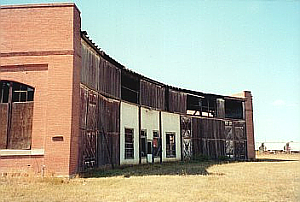
January 2002-Lincoln County received State Historical Fund grant of $122,297.00, with a local match of $40,767.00. This was a result of the Commissioners in office in 2009 deciding to save the roundhouse.
February 11, 2002-The first meeting of the Roundhouse Preservation, Inc. Board of Directors was held at the Hugo Town Hall. The RPI Articles of Incorporation and Bylaws were approved by the Board.
February 2002-The roundhouse was placed on Colorado Preservation, Inc.'s Most Endangered Historic Places list.
October 23, 2002-Union Pacific deeded the land under the roundhouse to Lincoln County, as a donation.
November 2002-Lincoln County purchased the roundhouse from Merlyn Stum for $40,000.00.
April 2003-Waco Scaffolding completed shoring up the roundhouse roof.
July 22, 2003-The State Economic Development Commission approved the roundhouse project for Enterprise Zone contributions.
October 2003-Rocky Mountain Restoration completed the first phase of the masonry wall stabilization.
May 2004-Roundhouse Preservation, Inc. received a State Historical Fund grant of $15,312, with a local match of $3,828.
October 2004-Roundhouse Preservation, Inc. received notice of approval of a $5,500 grant from the Cooper Clark Foundation, contingent upon approval of the State Historical Fund grant for engineering services for the roundhouse roof.
January 2005-Roundhouse Preservation, Inc. received a State Historical Fund grant of $47,250, with a local match of $6,570. The grant is for engineering services for replacement of the roundhouse roof.
March 2005-Rocky Mountain Restoration completed the second phase of the masonry wall stabilization.
July 2005-Roundhouse Preservation, Inc. received a State Historical fund grant of $123,480 for re-roofing the two north bays of the roundhouse. The local match is $13,720. Work is till in progress to raise the match.
January 2006-Lincoln County received a Transportation Enhancement grant of $346,640 to replace four more bays on the roundhouse. Roundhouse Preservation, Inc. completed the grant application paperwork and is responsible for raising the local match of $86,660.
December 2007-Roundhouse Preservation, Inc. was again very fortunate to receive another State Historical Fund grant. The amount is $11,025 and requires a match of $13,675. The funds will be used in conjunction with the July 2005 State Historical Fund grant to pay professional services fees.
In May 2008, strong winds unfortunately caused a partial collapse of the north wall of the roundhouse. The building was on the countys insurance, which paid the cost of having the wall rebuilt. The proposal of $128,190 from Building Restoration Specialties, Inc. to do the brickwork was accepted, plus $4,210 from Waco Scaffolding to install and relocate some scaffolding and $6,300 from Martin/Martin Engineers. Cleaning of the bricks started on September 8th, with rebuilding of the wall beginning on September 24th. The work was completed on October 17th.
June 2008 Roundhouse Preservation Inc. received notice of a grant from the Gates Family Foundation that will be awarded in two phases. The first is for $25,000 and will be used as match on the Transportation Enhancement Grant. The second is for $35,000 and will be used to assist with reroofing the two remaining bays on the roundhouse and installing windows and doors. At this point, the roundhouse will be completely enclosed.
July 2008 Roundhouse Preservation Inc. received notice of a $5,000 grant from the National Trust. These funds will also be used as match on the Transportation Enhancement Grant.
September 8, 2008-Building Restoration Specialties, Inc. began cleaning the downed bricks for the north wall of the roundhouse. The wall was replaced about four weeks later at a cost of approximately $128,000.00.
October 2008 Roundhouse Preservation Inc. received notice of a $10,000 grant awarded from the El Pomar Foundation, which will also be used as match on the Transportation Enhancement Grant.
October 2008 Bids were opened for replacement of the roof over the two north bays of the roundhouse. There was a difference of $278 between the two bids submitted, but unfortunately they were higher by $53,560 than funds available. At the present time, the two bidders are working together to reduce costs, if possible, and allow the construction to proceed.
February 2009 - Word is received from the Colorado Department of Transportation that replacement of the roundhouse roof is eligible for American Recovery and Reinvestment Act (ARRA) funding, which would require no match. Meetings are held and paperwork submitted.
March 20, 2009 - Notice is received that the Colorado Transportation Commission awarded $555,000 of ARRA funds to the roundhouse for construction of a new roof over the entire building.
September 17, 2009 - The Lincoln County Commissioners opened the bids for construction of the new roof, with the project estimate being $765,100. The bids were as follows: McCauley Constructors, Inc. - $478,846.62; Sprung Construction - $589,200; Spectrum General Contractors, Inc. - $701,740; Torix General Contractors, Inc. $1,028,060; and Palace Construction - $1,188,764.
October 16, 2009 - The Lincoln County Commissioners accepted McCauley Constructors Inc.'s bid and the Notice of Award was issued.
November 18, 2009 - The Notice to Proceed was issued. Since the bid accepted came in substantially lower than the estimate, after adding contingency funds, the total ARRA funds awarded for the project was $531,670.
January 26,2010 - Masonry subcontractor, Building Restoration Specialties, begins work at the roundhouse.
February 2, 2010 - Top Gun Framing, 2nd tier subcontractor of Bader Burke, begins demolition of the old roof, which is done two bays at a time. Work starts on the north side of the roundhouse with bays 7 and 8. After demolition, the beams, joists and decking are installed. The work is substantially completed by mid-April.
March and April 2010 - The existing smoke jacks are removed from the roof by subcontractor Major Asbestos Control and have to be abated due to friable asbestos being found in them. Subcontractor Nostalgic Stone starts building new smoke jacks and rings and installing them. Subcontractor R W Welding works on interior of building performing various welding tasks.
April, May and June 2010 - Strongarm Construction, 2nd tier subcontractor of Bader Burke, works on high and low eaves.
April 20, 2010 - Central States Roofing begins installing roof insulation and construction of new reinforced membrane roof system. The work is substantially completed by the middle of May.
April 29, 2010 - Notice is received that a Transportation Enhancement grant of $398,000 was awarded for installation of new doors and windows in the roundhouse. A match of $100,000 is required, plus an additional $60,000 for engineering and architectural fees.
May 2010 - Subcontractor Rob Wilson Painting begins work on the roundhouse.
Mid-May through Mid July 2010 - An inspection of the roof by Dale Strutt reveals that a portion of the roof was not installed to Firestone's (roof manufacturer) specifications. A request is made to Firestone to warranty the entire roof as constructed, but they would not do so.
Roundhouse roof completed 2010.
February 2010 A Transportation Enhancement grant of $398,000 was applied for to complete the doors and windows in the roundhouse. The grant was approved and is required to run through Lincoln County.
August 2010 Notification is received that Roundhouse Preservation, Inc. was awarded a State Historical Fund grant of $124,113 for professional services fees and the restoration/replication of the 16 bay doors, 3 man doors, and all windows. Also included was screens in one sash of the 24 windows on the south, west and north elevations. This will serve as match for the Transportation Enhancement grant.
February through September 2010 Notice is received from the State Historical Fund that a letter from the easement holding organization, which is Colorado Preservation, Inc., agreeing to accept an easement update on the roundhouse property and providing information on the cost of the easement.
October 2010 to November 2011 Numerous problems are encountered with obtaining the easement update. The law firm that had been handling the work went out of business and the paperwork had to be tracked down. Colorado Preservation, Inc. staff located it and the easement reached the State Historical Fund office.
January 12, 2012 The grant award contract is signed and returned to the State Historical Fund. The end date of the contract is February 10, 2014.
February & March 2012 Contracts are signed with the engineer and architect.
April 5, 2012 A Scoping Meeting is held with CDOT staff and numerous issues are discussed.
June 12 & 13, 2012 A constructability meeting is held to discuss how to meet the directives from CDOT and to view the existing conditions and discuss options for rehabilitation of the windows and doors.
Two contractors, as well as the architect and engineer, attend.
June 2012 through June 2013 - The construction documents are 65% completed and submitted to CDOT and the State Historical Fund.
August 7, 2013 A Field Inspection Review meeting is held with CDOT staff where specific construction requirements and specifications are noted and discussed.
August, September & October 2013 Notice of prequalification of contractors for the doors and windows project is advertised. The engineer, architect and the County Administrator meet and determine that Spectrum General Contractors and Wattle and Daub will be allowed to bid on the project. CDOT gave approval for prequalification of only two contractors.
November 2013 The final set of construction documents are completed and submitted to the Federal Highway Works Administration for approval.
January 10, 2014 Notice is received from the State Historical Fund that the final set of construction documents are conditionally approved, but with several conditions, including the submission of shop drawings and product information.
March 18, 2014 Bids received from Spectrum General Contractors ($682,530.00) and Wattle & Daub (728,574.00) are opened. The available funding for construction is $498,097.
March 2014 The engineer and architect make recommendations to reduce the Scope of Work by removing demolition of the non-historic infill, six bay doors, the clerestory windows above all of the doors, and the screens. These are accepted by Lincoln County and the plans and specifications modified and approved by CDOT.
May 19, 2014 Bids for the revised project are opened and Spectrum General Contractors bid of $513,840.00 is accepted. The reduced Scope of Work and budget revisions are submitted to the State Historical Fund.
July 16, 2014 The Preconstruction meeting is held with CDOT staff, Spectrum General Contractors, Engineer David Wittman, Historical Architect Merrill Wilson and County Administrator Roxie Devers.
July and August 2014 The Intergovernmental Agreement with CDOT and the contract with Spectrum General Contractors are signed.
July 2014 A request is made to the State Historical Fund to extend the current contract due to the large amount of lumber that is required for the project and the length of time (60 to 90 days) that it will take to acclimate it to the required 8% moisture content. The grant is extended to February 10, 2015.
August 29, 2014 The Notice to Proceed is issued to Spectrum General Contractors.
August through December 2014 Roundhouse Preservation, Inc. signs a contract with the Pridian Design Group to develop a vision for use of the roundhouse. A committee is formed to help complete the work. The Lincoln County Tourism Board provided the funding.
September 2014 The revised Scope of Work and the final set of construction documents are conditionally approved by the State Historical Fund, but with the same conditions mentioned in January 2014. Temporary electrical power is installed at the roundhouse and a security fence is erected around the building.
September 2014 Notice is received from Spectrum General Contractors that the window portion of the business has been sold to Heritage Window Restoration. This results in discussions with the involved parties as to how this will work when the contract is with Spectrum.
November 2014 A request is made to the State Historical Fund to extend the contract ending February 10, 2015 because of unforeseen project delays. The grant is extended to February 10, 2016.
January 2015 The issue with Spectrum General Contractors selling the window portion of their business to Heritage Window Restoration is resolved.
February through April 2015 Spectrum General Contractors has questions concerning the item specific warranties on several items. These are resolved in April.
May 11-13, 2015 The historic windows are removed from the roundhouse.
July, 2015 Temporary enclosures are re-installed from where the windows were removed. The openings for both the restored and rebuilt window and door frames were measured.
August 2015 The locomotive doors are removed from the roundhouse.
August 2015 through February 2016 Restoration of the useable window frames, mullions and sash, etc. is completed, as well as replication of the same components in the missing windows.
October, November, December 2015 Structural work is done by Spectrum to replace columns #2 and #6, repair work on columns #1 and #3 and the headers for 7, 8, and 9, all of which was completed. The replicated window on the southeast corner of the building was installed. Denver Masonry has employees on site doing window sill buildups and structural work, masonry cleaning and tuck pointing. Restoration and replication of the bay doors and construction of the steel door frames is completed.
November 2015 A request is made to the State Historical Fund to extend the contract ending February 10, 2016 since the construction will not be completed until late April. The contract is extended to February 10, 2017.
December 2015 Roundhouse Preservation, Inc. contracted with Denver Masonry to clean the interior brick. The Lincoln County Tourism Board gave $5,000.00 to assist with the cost. January through March 2016 The bay doors are tested fitted, then removed and taken back to the shop so the sheathing, etc. can be installed. The restored/replicated window frames, windows and sash are installed.
April through May 5, 2016 The bay doors are brought back on site and installed in the roundhouse. A man door was also constructed and installed in the back (west side) of the roundhouse. The thresholds for the doors are completed and bollards are installed to hold the bay doors in place when open.
April 2016 Roundhouse Preservation, Inc. applied for a State Historical Fund grant to finish the bay doors, the windows above the doors and for interior operable screens in some of the sashes already installed.
May 5, 2016 The Final Construction Acceptance Certificate is signed.
August 2016 Notice was received from the State Historical Fund that Roundhouse Preservation, Inc.s grant application of $200,000 was approved.
August 2016 Roundhouse Preservation, Inc. applied for a Transportation Alternatives Program grant on behalf of Lincoln County to assist with match on the State Historical Fund grant. The grant is funded through the Colorado Department of Transportation and, if approved, will be administered by Lincoln County. Notice was received in October 2016 that the grant was approved.
October 6, 2016 The Final Settlement and payment to Spectrum General Contractors is made.
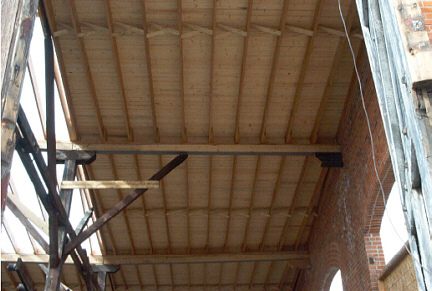 
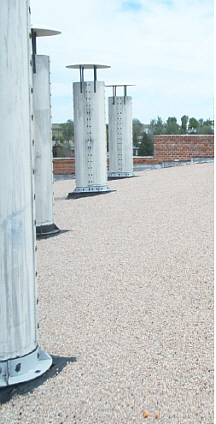
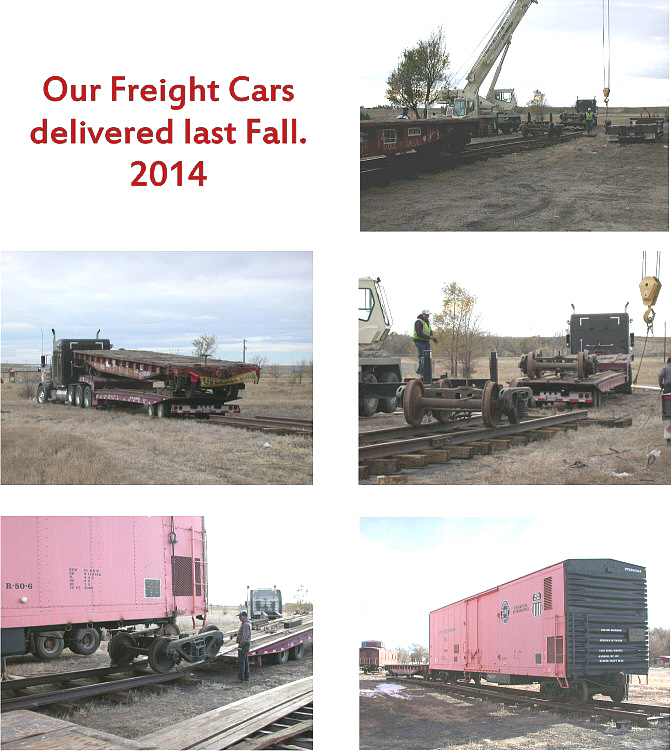
March 2017 CDOT submits a draft of their Intergovernmental Agreement to be signed by Lincoln County. After numerous questions and answers, the final draft was submitted to the County Commissioners for their approval and signature. The Agreement was signed on October 6, 2017. One item, a resolution by the Commissioners, was not included in the Agreement. Upon that being submitted, the Agreement was signed on January 4, 2018.
February 2018 Martin/Martin Engineers begins work on finalizing the contract documents for Phase 2 of the doors and windows on the roundhouse. Discussions also begin on prequalifying contractors to bid on the project.
September 2018 CDOT is not in favor of prequalifying contractors and will not make a final decision until sometime in 2019. The County Commissioners decide to not prequalify contractors so the project can move forward.
December 2018 Contract documents are finalized and approved by CDOT and the project goes out to bid.
January 15, 2019 A mandatory walk through was held at the roundhouse for contractors wanting to bid on the project.
January 30, 2019 Bids were opened on phase 2 of the doors and windows on the roundhouse. They were as follows: Pratum Construction, LLC - $510,330; Spectrum General Contractors, Inc. - $388,136. The County Commissioners accepted the bid from Spectrum, which will be awarded to the contractor upon submission by the required documents and approval by CDOT.
Covid-Summer, 2020 - The exterior restoration of the historical structure was completed in mid Summer 2020.
Covid-Summer, 2020 A work party of volunteers and two front loaders worked and cleaned out the first 5 bays of trash and debris clearing the way for first phase interior construction. Plans for the interior design are also started by architect Brett Johnson. The first phase interior is focused on the four bay exhibition hall and the restrooms and the kitchen for bay 5.

Home |
Calendar |
Time Line |
Work in Progress |
Store |
Contact Us
Copyright Roundhouse Preservation Inc. 2007-20
|







|



























